- Clone
- P30-15 (See other available formats)
- Regulatory Status
- RUO
- Other Names
- NKp30, NCR3, Activating NK receptor NKp30, natural cytotoxicity triggering receptor 3
- Isotype
- Mouse IgG1, κ
- Ave. Rating
- Submit a Review
- Product Citations
- 11 publications
| Cat # | Size | Price | Save |
|---|---|---|---|
| 325207 | 25 tests | ¥29,480 | |
| 325208 | 100 tests | ¥64,240 |
The p30-15 monoclonal antibody recognizes CD337 also known as activating NK receptor NKp30 (NKp30), and natural cytotoxicity triggering receptor 3. NKp30 is a type I transmembrane protein, member of the natural cytotoxicity receptor family that contains one immunoglobulin-like domain. NKp30 has an apparent molecular weight of 30 kD and six isoforms are produced by alternative splicing. NKp30 is expressed on resting and activated NK cells. NKp30 enhances NK cell cytolysis of tumor cellts that are deficient in MHC class I molecules. NKp30 has been shown to associate with CD59 and TCRζ. The p30-15 antibody against human NKp30 has been shown to be useful for flow cytometry, stimulation of human NK cells via NKp30 in a redirected lysis assay, and blocking of NKp30 function in solution.
Product DetailsProduct Details
- Verified Reactivity
- Human
- Reported Reactivity
- African Green, Baboon, Cynomolgus, Rhesus
- Antibody Type
- Monoclonal
- Host Species
- Mouse
- Immunogen
- Recombinant human NKp30
- Formulation
- Phosphate-buffered solution, pH 7.2, containing 0.09% sodium azide and BSA (origin USA)
- Preparation
- The antibody was purified by affinity chromatography, and conjugated with PE under optimal conditions.
- Concentration
- Lot-specific (to obtain lot-specific concentration and expiration, please enter the lot number in our Certificate of Analysis online tool.)
- Storage & Handling
- The antibody solution should be stored undiluted between 2°C and 8°C, and protected from prolonged exposure to light. Do not freeze.
- Application
-
FC - Quality tested
- Recommended Usage
-
Each lot of this antibody is quality control tested by immunofluorescent staining with flow cytometric analysis. For flow cytometric staining, the suggested use of this reagent is 5 µl per million cells in 100 µl staining volume or 5 µl per 100 µl of whole blood.
- Excitation Laser
-
Blue Laser (488 nm)
Green Laser (532 nm)/Yellow-Green Laser (561 nm)
- Application Notes
-
Additional reported applications (for the relevant formats) include: ELISA, stimulation of human NK cells via NKp30 in a redirected lysis assay, and blocking of NKp30 function in solution1,3,5. The Ultra-LEAF™ purified antibody (Endotoxin <0.1 EU/µg, Azide-Free, 0.2 µm filtered) is recommended for functional assays (Cat. Nos. 325223 & 325224).
-
Application References
(PubMed link indicates BioLegend citation) - Product Citations
-
- RRID
-
AB_756111 (BioLegend Cat. No. 325207)
AB_756111 (BioLegend Cat. No. 325208)
Antigen Details
- Structure
- Type I transmembrane protein, member of the natural cytotoxicity receptor family, contains one immunoglobulin-like domain. Approximately 44 kD. Six isoforms produced by alternative splicing.
- Distribution
-
IL-2 activated NK cells and NK cell lines, some γ/δ T cells activated in vitro
- Function
- NK cell triggering of cytolysis toward tumor targets and other target cells deficient in MHC class I molecules
- Interaction
- CD59, TCRζ
- Cell Type
- NK cells, T cells
- Biology Area
- Immunology
- Molecular Family
- CD Molecules
- Antigen References
-
1. Pende D, et al. 1999. J. Exp. Med. 190:1505.
- Gene ID
- 259197 View all products for this Gene ID
- UniProt
- View information about CD337 on UniProt.org
Related FAQs
- What type of PE do you use in your conjugates?
- We use R-PE in our conjugates.
Other Formats
View All CD337 Reagents Request Custom ConjugationCustomers Also Purchased


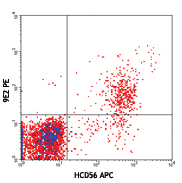
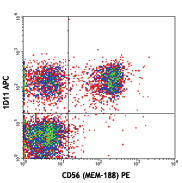
Compare Data Across All Formats
This data display is provided for general comparisons between formats.
Your actual data may vary due to variations in samples, target cells, instruments and their settings, staining conditions, and other factors.
If you need assistance with selecting the best format contact our expert technical support team.
-
Purified anti-human CD337 (NKp30)
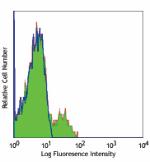
Human peripheral blood lymphocytes stained with purified P30... -
Biotin anti-human CD337 (NKp30)
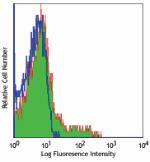
Human peripheral blood lymphocytes stained with biotinylated... -
PE anti-human CD337 (NKp30)
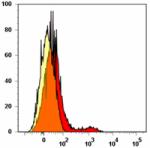
Human peripheral blood lymphocytes stained with P30-15 PE -
APC anti-human CD337 (NKp30)
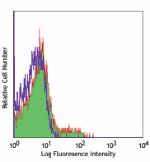
Human peripheral blood lymphocytes stained with P30-15 APC -
Alexa Fluor® 647 anti-human CD337 (NKp30)
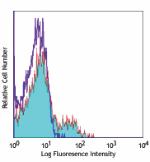
Human peripheral blood lymphocytes stained with P30-15 Alexa... -
PerCP/Cyanine5.5 anti-human CD337 (NKp30)

Human peripheral blood lymphocytes were stained with CD56 FI... -
PE/Cyanine7 anti-human CD337 (NKp30)
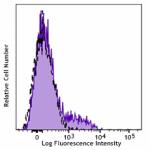
Human peripheral blood lymphocytes were stained with CD337 (... -
Brilliant Violet 711™ anti-human CD337 (NKp30)
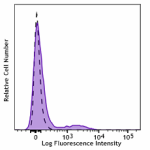
Human peripheral blood lymphocytes Brilliant Violet 711™ CD... -
TotalSeq™-C0801 anti-human CD337 (NKp30)
-
TotalSeq™-A0801 anti-human CD337 (NKp30)
-
Brilliant Violet 785™ anti-human CD337 (NKp30)

Human peripheral blood lymphocytes were stained with CD56 FI... -
APC/Fire™ 750 anti-human CD337 (NKp30)

Human peripheral blood lymphocytes were stained with CD56 FI... -
Brilliant Violet 421™ anti-human CD337 (NKp30)

Human peripheral blood lymphocytes were stained with CD56 FI... -
PE/Dazzle™ 594 anti-human CD337 (NKp30)

Human peripheral blood lymphocytes were stained with CD56 FI... -
Ultra-LEAF™ Purified anti-human CD337 (NKp30)
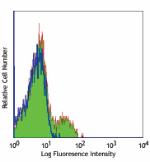
Human peripheral blood lymphocytes stained with purified P30... -
TotalSeq™-B0801 anti-human CD337 (NKp30) Antibody
-
Brilliant Violet 605™ anti-human CD337 (NKp30) Antibody

Human peripheral blood lymphocytes were stained with anti-hu... -
KIRAVIA Blue 520™ anti-human CD337 (NKp30)

Human peripheral blood Lymphocytes were stained with anti-hu... -
PE/Fire™ 810 anti-human CD337 (NKp30)

Human peripheral blood lymphocytes were stained with anti-hu... -
TotalSeq™-D0801 anti-human CD337 (NKp30)
-
APC/Cyanine7 anti-human CD337 (NKp30)

Human peripheral blood lymphocytes were stained with anti-hu... -
Spark Red™ 718 anti-human CD337 (NKp30) (Flexi-Fluor™)





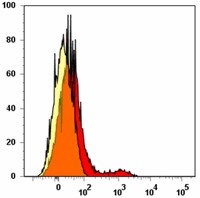













Follow Us